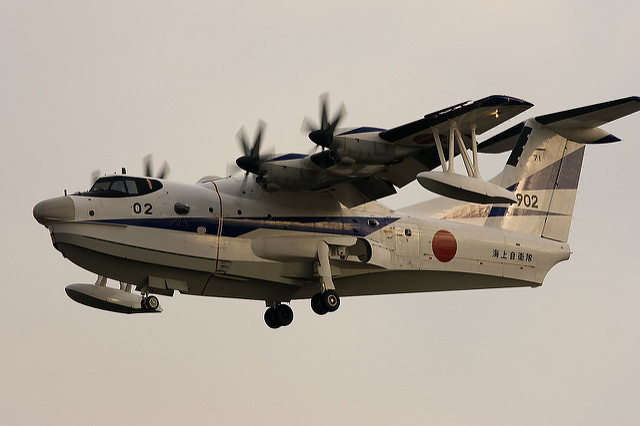As the Asia–Pacific becomes increasingly contested, Southeast Asian nations find themselves courted by a range of Asian powers interested in their strategic locations and burgeoning economies. Both China and India seek to expand their influence in Southeast Asia, as the US pushes to maintain centrality and credibility. But one of the most determined suitors is Japan. Japan’s determined re-engagement in the sub-region risks reviving dark memories of Japanese military aggression during World War Two, which continue to simmer under the surface. But those concerns will be tempered in at least some Southeast Asian capitals by fears of Chinese assertiveness in the region, coupled with a desire to strengthen their relations with the West. As such, ASEAN’s members must walk a fine line as they seek maximum economic benefits from China while maintaining their security and sovereignty.
In Japan’s ideal Asia, Southeast Asian states would effectively counterbalance China’s increasing regional influence. While Tokyo can’t hope to match China’s economic muscle, it expects Southeast Asian nations to shoulder some of the burden by hedging against China’s growing weight. That could be achieved by nurturing their links with a range of Asian partners, and pursuing their own interests in maritime security and a regional architecture that reinforces an order based on rules and laws—a central element of Prime Minister Abe’s intention for Japan to become a ‘proactive contributor to peace’. For Tokyo, that’s a good outcome, and far more preferable than a Southeast Asia that bandwagons with China. Moreover, China’s economic slowdown offers new opportunities for Japan to lift its own economic game. Increasingly, Japan finds itself a more prominent competitor in the ring as Southeast Asia seeks investment and support from sources other than China.
But what’s in it for Southeast Asia? Well, having competing economic powerhouses vying for your patronage is no bad thing. Take a look, for instance, at Indonesia’s high-speed rail project. After a protracted bid, Indonesia selected China to complete the construction of the Jakarta–Bandung line in September 2015, disappointing Japan in the process (although the project has recently stalled after a series of bureaucratic hold-ups). Despite sore feelings, Indonesia and Japan subsequently held a successful 2+2 ministerial dialogue attended by both countries’ defence and foreign ministers, where Indonesia expressed its interest in purchasing Japanese military products, such as US-2 amphibious aircraft for use in maritime rescue operations. So, on two fronts, Indonesia has been able to position itself adroitly between two hefty Asian powers. The ability to hedge in that way will of course vary from state to state; the Southeast Asian nations who rely on China’s ‘no strings’ economic assistance will find it more difficult to play one side against the other.
Japan believes it can make gains in two major areas in Southeast Asia: economics, and defence and security. First, strong economic growth and development in Southeast Asia could have positive trickle-down effects for the Japanese economy, which has suffered at the hands of structural weaknesses, stagnant incomes and China’s slowdown. Southeast Asia’s rapidly growing middle class, with a projected membership of 400 million by 2020 (PDF) is an attractive market to both Japanese exporters and private sector—which already has a competitive edge in ASEAN (PDF)—who stand to gain plenty from engaging Southeast Asia on infrastructure and development projects. A heightened Japanese presence could also have the added effect of diluting China’s economic penetration of the region.
Second, Japan’s efforts to strengthen the maritime security capabilities of Southeast Asian states, among other actions, could potentially lead to a more equitable balance of power in the South China Sea, and potentially draw China’s attention away from tensions in the East China Sea. There have been a number of instances where Japan has sought to strengthen its relations with Southeast Asian nations through defence cooperation, and the transfer of technology and equipment.
Japan will again participate in the upcoming Exercise Cobra Gold, to be held 9–19 February; the annual multilateral exercise will afford Japan an opportunity to continue to strengthen its military relations with co-hosts the US and Thailand, along with Singapore, Indonesia, Malaysia and South Korea. Japan also has observer status in Exercise Balikatan, jointly organised by the Philippines and the US. Japanese plans to transfer defence equipment to Southeast Asian nations’ coast guards and militaries have ramped up since April 2014, after the Abe administration loosened its self-imposed ban on arms exports (save for states embargoed by the UN), opening avenues for defence and technology transfer and cooperation. See, for instance, the potential export of second-hand Japanese Maritime Self-Defence Force TC-90 aircraft and the gifting of 10 44-metre patrol boats to the Philippines, and the pledge made by Japanese foreign minister Fumio Kishida of a donation of six vessels to Vietnam in 2014.
The recent changes to allow for limited collective self-defense by expanding the remit of the Japanese Self-Defense Force add to Japan’s ability to engage with Southeast Asian countries on defence and security issues, albeit in limited ways. While those changes fall well short of suggesting that Japan will take an aggressive posture vis-à-vis China in Southeast Asia and on the South China Sea in particular (which is ‘simply not a life or death issue for Tokyo’), they do signal that Japan is increasingly willing and able to engage the region on defence issues. Additionally, helping claimant states reach a level of minimum credible deterrence is demonstrably in Japan’s interests, given its dependence on open sea lanes for resource imports.
Many in Southeast Asian capitals no doubt harbour memories of Japan’s World War Two aggression. However, their real-time concerns about Chinese assertiveness in the region will likely remain a higher priority. Japan’s recent efforts to make amends for historical atrocities—on the so-called ‘comfort women’ issue, for instance—might just see Southeast Asian states give Japan the benefit of the doubt as it seeks stronger partnerships across the region.


